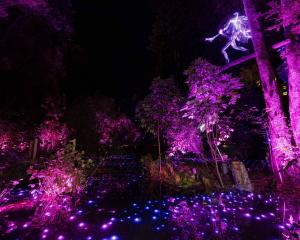
It was a glorious late-summer day, and my friend Fidra had booked us a night at a "glamp-site" — namely a luxury wooden cabin, replete with comfy beds, electricity, heating, and even a hot tub, should we wish to pay extra.
We had spent our day traipsing around the town, wandering through its cobbled streets, marveling at the Elizabethan town walls, the gorgeous Georgian houses, and the sparkling River Tweed. We went on a river tour, we visited quaint old bookshops, we ate ham sandwiches on the banks of the river under the arch of the Old Berwick Bridge.

I was robbed of the soft fairy lights and luxury duvets of the glamping pod; instead, my night was lit by the harsh fluorescence of the bathroom’s strip lights. And yet, not even this night of vomitous misery has dimmed my affection for Berwick-upon-Tweed.
*Berwick-upon-Tweed is a delightful little market town situated at the northernmost tip of Northumberland, overlooking the River Tweed as it meets the North Sea. It is England’s most northerly town — indeed, it is further north than some parts of Scotland — but it hasn’t always been English.
Like an unwanted Christmas present, Berwick-upon-Tweed has been passed back-and-forth between England and Scotland; it’s been English, then Scottish, then English again ... you get the gist.
The name "Berwick" is thought to mean "barley farm" or "trading settlement," and it began as a modest wee settlement in the Anglo-Saxon Kingdom of Northumbria before passing into Scottish hands after the Battle of Carham in 1018. Its position at the mouth of the River Tweed rendered it a prized commodity, with its busy port, fertile hinterlands, and prime placement on the Anglo-Scottish frontier.
Berwick became rather wealthy by the 12th and 13th centuries, rivaling London and York in trade, particularly wool. From the 12th to the 16th centuries, the town changed hands between Scotland and England more than a dozen times.
By the time Elizabeth I came along, Berwick had settled under English control, although it retained a peculiar semi-autonomous status for centuries afterward.
In fact, Berwick-upon-Tweed’s history of switching allegiances between England and Scotland seems to have confused not only monarchs but also international diplomats. According to one legend, the town was left accidentally at war with Russia for more than a century after the Crimean War.
When Queen Victoria declared war against Russia in 1853, she signed her name as "Victoria, Queen of Great Britain, Ireland, Berwick-upon-Tweed and all British Dominions" (what a mouthful). Yet when the Treaty of Paris was signed to conclude the war, "Berwick-upon-Tweed" was left out. Technically, this small border town was still at war with one of the world’s great powers.
According to a story in The Guardian in 1966 however, this "war" was finally resolved when the Mayor of Berwick assured a visiting Pravda correspondent that peace had at last been declared — adding, with typical British understatement, that "the Russian people can sleep peacefully in their beds."
Berwick is particularly famous for its formidable fortifications, which are among the finest surviving examples of their kind in Britain. The original medieval walls were begun under the reign of Edward I after his brutal capture of Berwick in 1296. Then, in the mid-16th century, renewed fears of invasion from a united Scotland and France prompted Elizabeth I to rebuild the defences in the latest Italianate style.
Under the direction of Sir Richard Lee, a pioneering military engineer, Berwick was thus transformed into a model fortress with angular, bastioned ramparts designed to deflect cannon fire. You can still see most of these ramparts circling the town today; largely intact and walkable in their entirety, they offer a gorgeous view across the Tweed and remind visitors of Berwick’s legacy as the most fought-over town in Britain.
Berwick-upon-Tweed is many things: it is a port, a market town, a garrison town, and a holiday retreat.
But I am fascinated by Berwick-upon-Tweed because of its split character, its mixed history, the fact that it has been passed between two nations like a hot potato over the centuries. Part of the pull, I think, is in the blood: my paternal grandma is from Hawick, my English roots run deep in the northeast — in short, my ancestry hails from both sides of the Border.
I wonder how the inhabitants of Berwick-upon-Tweed see themselves; are they English, or Scottish? Or perhaps something different altogether — a "Berwicker", or "Tweedsider"?
Officially, Berwick-upon-Tweed is solidly English, under Northumberland’s jurisdiction, with English policemen, laws, and a mayor rather than a provost. On the other hand, its football and rugby clubs play in the Scottish leagues, its accent sounds more like the Lowlands than Geordie, and many residents prefer to travel to Edinburgh instead of Newcastle for work and shopping.
Berwick is the town that understood "liminality" long before cultural theorists made it trendy; it’s the human desire for conquest and ownership made manifest. It’s also a perfect little holiday spot.
For better or worse, Berwick-upon-Tweed is etched into my memory. I’m keen to return; not to relive that dreadful night on the bathroom floor, but to further research my family history in these ancient borderlands, soak in the town’s distinctive character, and make more memories worth keeping.
• Jean Balchin is an ODT columnist who has started a new life in Edinburgh.











